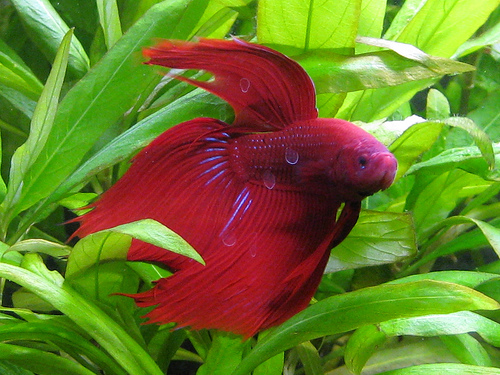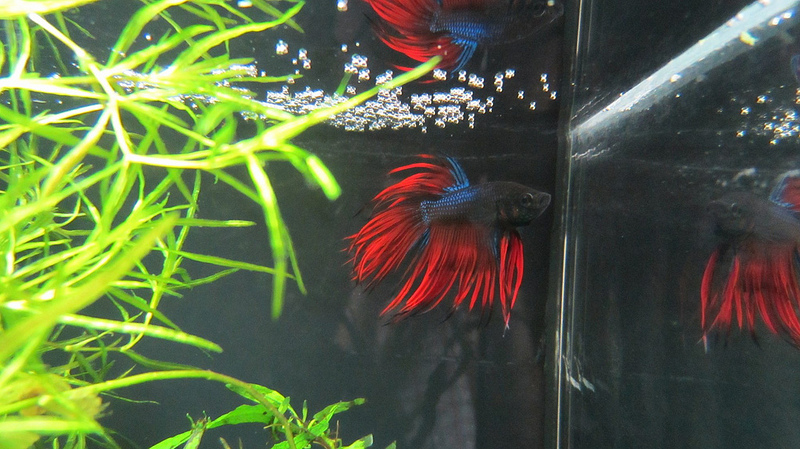Adaptation
Betta splendens, just like all organisms, has adapted over the span of time to create the species we are familiar with today. In both wild and commercial types, betta fish have some interesting, yet very important adaptations they use each and every day.
The most obvious adaptation of the betta
fish is their fins. Fins are an adaptation that fish have that are
one of their main sources of momentum when swimming and gliding
through water. With a total of seven different fins placed about the
body, fish use these fins for directing themselves and keeping
posture as they move throughout water. These fins are not only used
for movement, but also in the act of mating. Male Betta splendens
tend to grow longer fins as they are used in the courtship during
mating. Studies have shown that females prefer the males with the
larger, dominant fins (Daugs, 1967).
There are several other adaptations that are present during mating such as the ability of the male to make bubble nests. To do so, the male passes air through their buccal cavity until it is stored in the pharyngeal organ. Once the courtship begins, the male spits out the air forming bubbles to, in the end, store the fertilized eggs. The female also has a unique adaptation during courtship that causes a darkening affect to shade the vertical stripes present on the fish. This is to display that they are sexually interested and attracts the males (Kang & Lee, 2010).
The most important adaptation that betta fish possess is the development of their labyrinth organ. This organ is obtained within the first nine days after hatching (Daugs, 1967). As they breathe in, the air is circulated over the labyrinth and finally continues out the gills of the fish. This organ gives the fish the ability to live in areas of low oxygen content such as shallow ponds and rice fields as we have already discussed (Kang & Lee, 2010). It has been observed that the fish can even survive in moist clay or mud during dry seasons (Graham, 1997).
One interesting adaptation that has occurred across the species is the differentiation of the wild from the commercial varieties of the betta fish. The exuberant colors and flamboyant fins we have come to know, are actually adaptation that the commercial varieties have taken to. The wild betta fish tend to be less colorful as they are commonly grey or black, dull, with shorter fins. The colorful varieties we are more familiar with are present because of the pressing force of competition. They have been progressively adapted over the years with selective breeding as humans find the brighter, larger, and more aggressive fish the most favorable (Tillberg, 2010).
